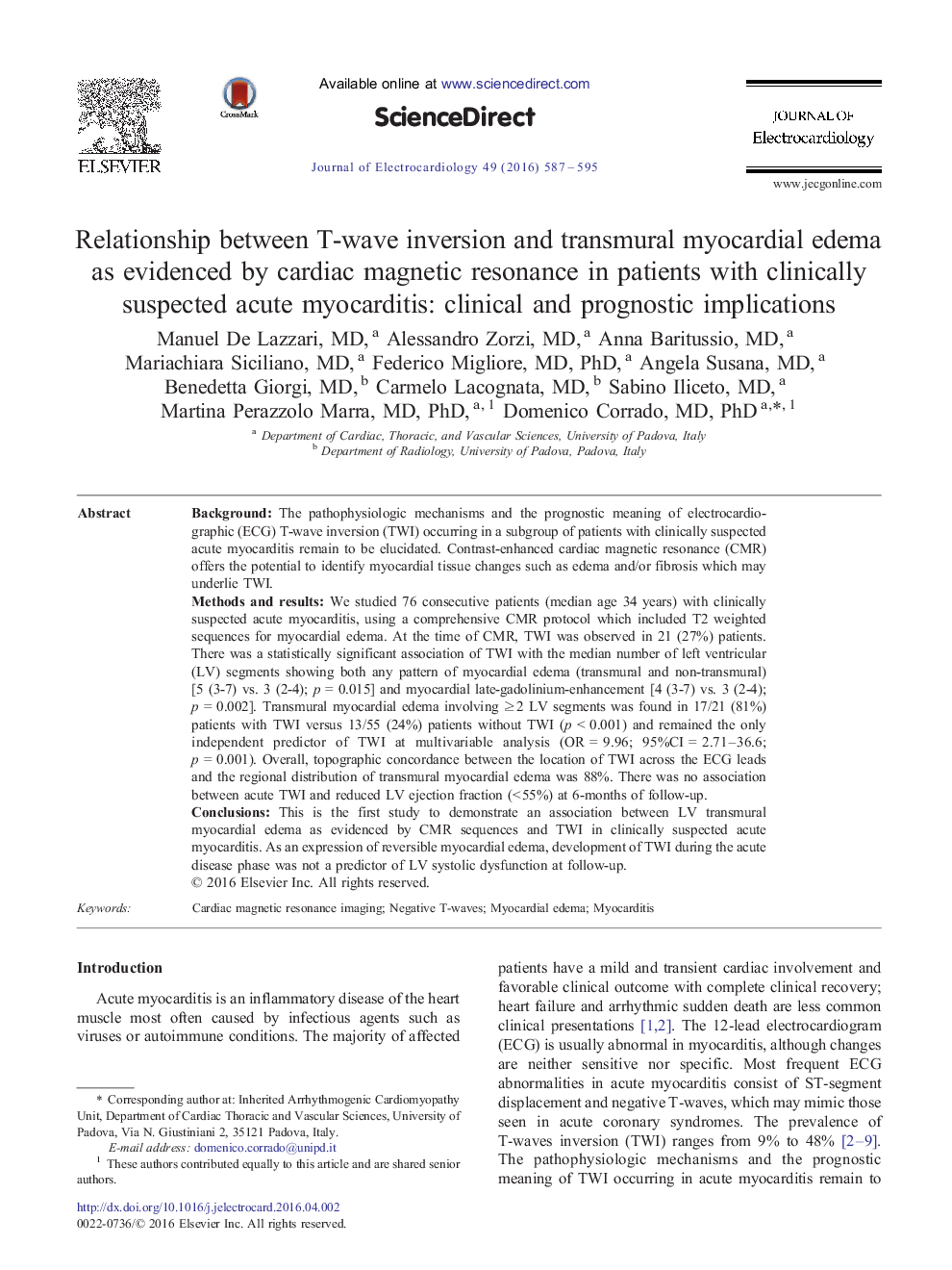| کد مقاله | کد نشریه | سال انتشار | مقاله انگلیسی | نسخه تمام متن |
|---|---|---|---|---|
| 5986150 | 1178839 | 2016 | 9 صفحه PDF | دانلود رایگان |

- T-waves inversion in patients with clinically suspected acute myocarditis showed a significant association with transmural myocardial edema as evidenced by CMR T2-weighted sequences.
- T-waves normalized in all patients and the presence of TWI during acute phase was not an unfavorable predictor of LV systolic dysfunction at 6-month period of follow-up.
- A possible interpretation of these findings is that, as an expression of reversible myocardial edema, TWI during the acute phase of myocarditis does not represent a marker of adverse prognosis because it reflects a transient impairment of myocardial function.
BackgroundThe pathophysiologic mechanisms and the prognostic meaning of electrocardiographic (ECG) T-wave inversion (TWI) occurring in a subgroup of patients with clinically suspected acute myocarditis remain to be elucidated. Contrast-enhanced cardiac magnetic resonance (CMR) offers the potential to identify myocardial tissue changes such as edema and/or fibrosis which may underlie TWI.Methods and resultsWe studied 76 consecutive patients (median age 34 years) with clinically suspected acute myocarditis, using a comprehensive CMR protocol which included T2 weighted sequences for myocardial edema. At the time of CMR, TWI was observed in 21 (27%) patients. There was a statistically significant association of TWI with the median number of left ventricular (LV) segments showing both any pattern of myocardial edema (transmural and non-transmural) [5 (3-7) vs. 3 (2-4); p = 0.015] and myocardial late-gadolinium-enhancement [4 (3-7) vs. 3 (2-4); p = 0.002]. Transmural myocardial edema involving â¥Â 2 LV segments was found in 17/21 (81%) patients with TWI versus 13/55 (24%) patients without TWI (p < 0.001) and remained the only independent predictor of TWI at multivariable analysis (OR = 9.96; 95%CI = 2.71-36.6; p = 0.001). Overall, topographic concordance between the location of TWI across the ECG leads and the regional distribution of transmural myocardial edema was 88%. There was no association between acute TWI and reduced LV ejection fraction (< 55%) at 6-months of follow-up.ConclusionsThis is the first study to demonstrate an association between LV transmural myocardial edema as evidenced by CMR sequences and TWI in clinically suspected acute myocarditis. As an expression of reversible myocardial edema, development of TWI during the acute disease phase was not a predictor of LV systolic dysfunction at follow-up.
Journal: Journal of Electrocardiology - Volume 49, Issue 4, JulyâAugust 2016, Pages 587-595